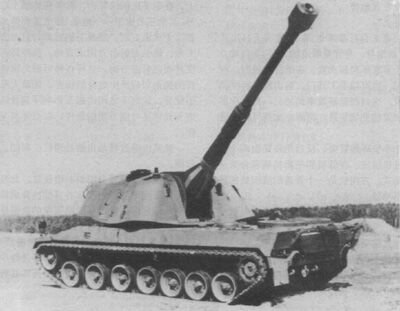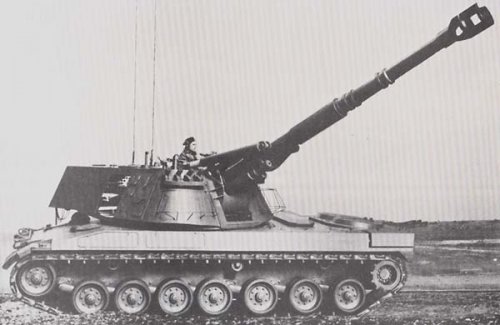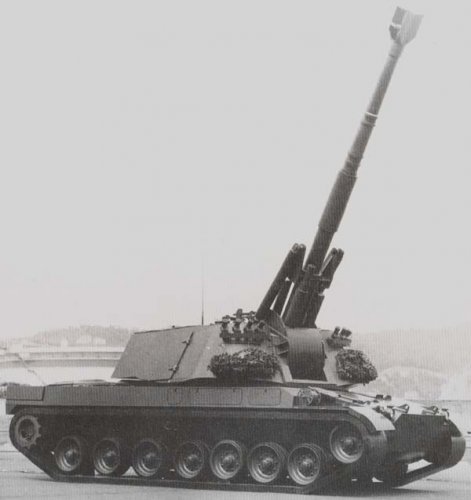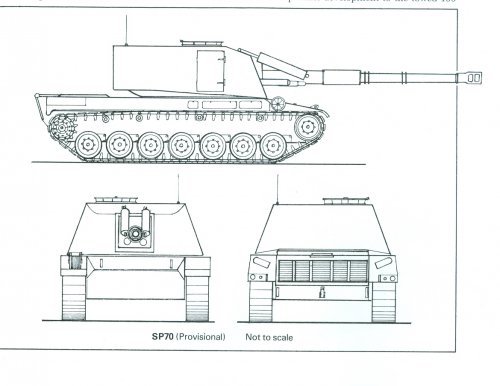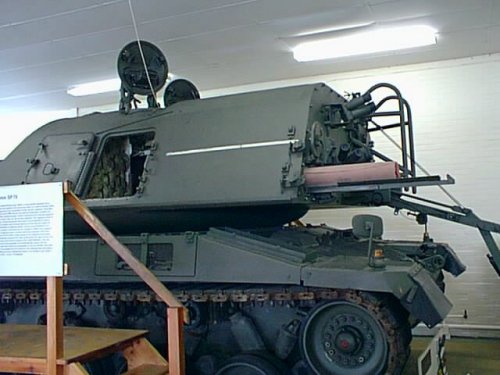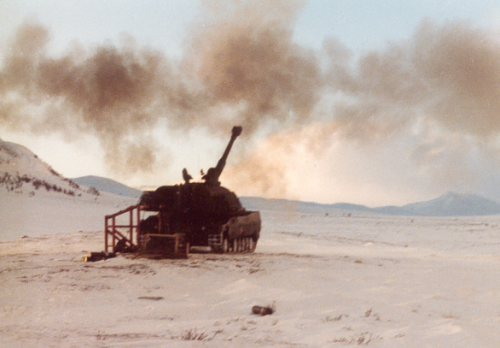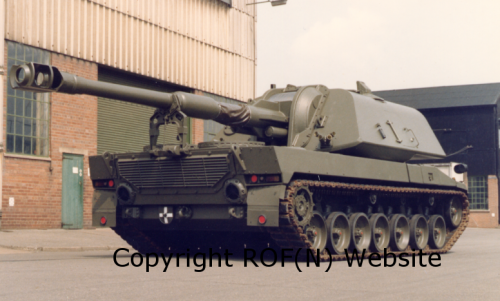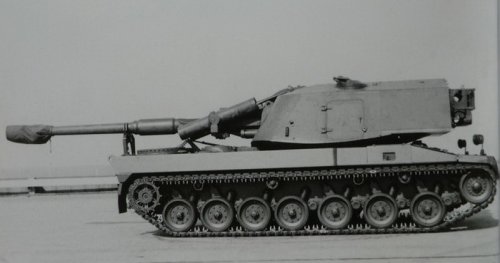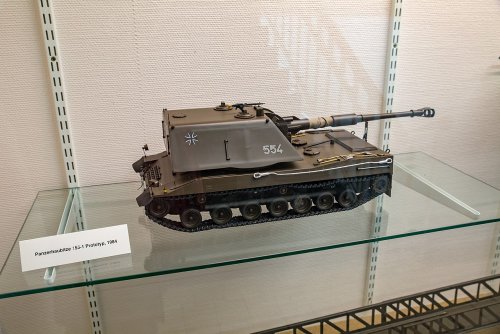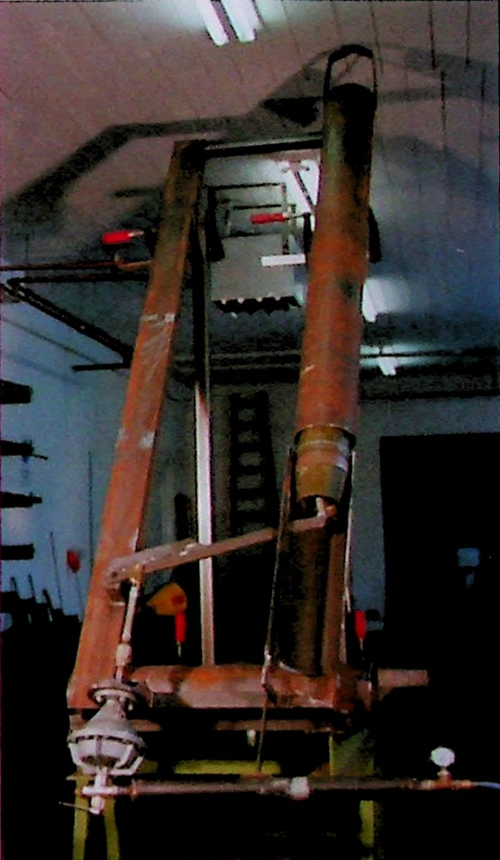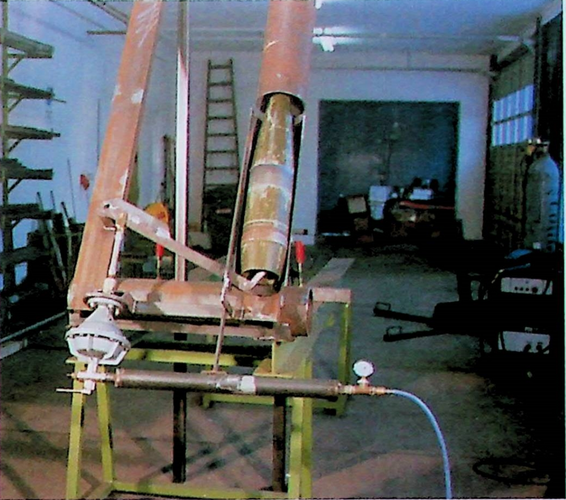You are using an out of date browser. It may not display this or other websites correctly.
You should upgrade or use an alternative browser.
You should upgrade or use an alternative browser.
SP 70 / PzH 155-1
- Thread starter cador
- Start date
- Joined
- 25 July 2007
- Messages
- 4,299
- Reaction score
- 4,196
The SP 70 (or PzH 155-1) was a 1973 M109 replacement for West Germany, Britain, and Italy. Obviously, the howitzer used was the FH 70.
The SP 70 began on a Leopard 1 chassis but moved to the Leo 2. Production models were to have aluminum hulls and turrets (like the M109). Power was by MTU MB 871 diesel.
The SP 70 began on a Leopard 1 chassis but moved to the Leo 2. Production models were to have aluminum hulls and turrets (like the M109). Power was by MTU MB 871 diesel.
Attachments
- Joined
- 25 July 2007
- Messages
- 4,299
- Reaction score
- 4,196
And a bit more ...
From Brassey's Artillery of the World (1977)
"155mm gun SP 70
Tri-national: Fedreal Republic of Germany, Italy, United Kingdom
Calibre: 155mm, Barrel length: 39 calibres, Muzzle brake: double baffle, Ammunition type: separate, Charges: 8, Ammunition options: HE (43.5kg); Smoke BE; Illuminating, Muzzle velocity: 827 m/sec, Maxium rnage: 24,000 m, Traverse on carriage: 360, Detachment: 6, Chassis type: individual.
SP 70 is a project being undertaken by Germany, Italy and the United Kingdom in parallel with the FH 70 towed gun project. SP 0 will be the FH 70 ordnance mounted on a purpose designed chassis. The breakdown of development work is:
Italy: Recoil system; Loading system; Some chassis elements,
Germany: Chassis and running gear [KMW],
United Kingdom: Turret; Sights
Performance will be directly comparable with the FH 70. Existing 155mm ammunition and a purpose-built type (HE, smoke and illuminating), will be used. The rocket assisted projectiles which are under development will increase range to 30,000 m."
From Brassey's Artillery of the World (1977)
"155mm gun SP 70
Tri-national: Fedreal Republic of Germany, Italy, United Kingdom
Calibre: 155mm, Barrel length: 39 calibres, Muzzle brake: double baffle, Ammunition type: separate, Charges: 8, Ammunition options: HE (43.5kg); Smoke BE; Illuminating, Muzzle velocity: 827 m/sec, Maxium rnage: 24,000 m, Traverse on carriage: 360, Detachment: 6, Chassis type: individual.
SP 70 is a project being undertaken by Germany, Italy and the United Kingdom in parallel with the FH 70 towed gun project. SP 0 will be the FH 70 ordnance mounted on a purpose designed chassis. The breakdown of development work is:
Italy: Recoil system; Loading system; Some chassis elements,
Germany: Chassis and running gear [KMW],
United Kingdom: Turret; Sights
Performance will be directly comparable with the FH 70. Existing 155mm ammunition and a purpose-built type (HE, smoke and illuminating), will be used. The rocket assisted projectiles which are under development will increase range to 30,000 m."
Attachments
PMN1 said
Perhaps, but designing the different bits in different countries always seemed to me to be asking for trouble. There have been several other "cooperative" tank failures.does suggest 'the will' wasn't really there.
Red Lancer
ACCESS: Restricted
- Joined
- 28 December 2008
- Messages
- 5
- Reaction score
- 1
Thought I'd post some info on why SP70 failed.
As a multi nation project I recall the responsibility for the ordnance was british, the turret italian and the main body german. Each country chose what they thought was best - a bit like a camel being a horse designed by a committee. As you can see from the photos the germans went with the tried and tested Leopard chassis. The problem was that with the engine at the rear and the turret in the middle a complicated ammo handling system was required to move the shells and charge bags from the ground up. This system had about twenty microswitches in series that all needed to be in the correct position for the system to work. As each microswitch had about a 2% chance of not correctly aligning then the chance of the thing working was tiny. In fact it didn't so it was cancelled.
As a multi nation project I recall the responsibility for the ordnance was british, the turret italian and the main body german. Each country chose what they thought was best - a bit like a camel being a horse designed by a committee. As you can see from the photos the germans went with the tried and tested Leopard chassis. The problem was that with the engine at the rear and the turret in the middle a complicated ammo handling system was required to move the shells and charge bags from the ground up. This system had about twenty microswitches in series that all needed to be in the correct position for the system to work. As each microswitch had about a 2% chance of not correctly aligning then the chance of the thing working was tiny. In fact it didn't so it was cancelled.
- Joined
- 21 May 2006
- Messages
- 3,002
- Reaction score
- 2,278
As a kid looking through military books and mags - I thought this program would have been a winner! What being a joint nation project utilizing the FH-70 155mm howitzer and the Leopard 1 MBT chassis - I was admit it would be a cost effective system. How naive I was (mind you in 1977, I was only 6 years old!)
Does anyone have any idea of what the cost were to have been per vehicle?
Does anyone know if the SP-70 made it to test firing status?
And finally is there any footage of the SP-70 showing mobility and firing???
Regards
Pioneer
Does anyone have any idea of what the cost were to have been per vehicle?
Does anyone know if the SP-70 made it to test firing status?
And finally is there any footage of the SP-70 showing mobility and firing???
Regards
Pioneer
- Joined
- 27 September 2006
- Messages
- 6,417
- Reaction score
- 6,817
Another of those 70s weapons that looked cool but wasnt. I can imagine the turret on the
MBT 70 driver version (developed by the Germans for their Flak tank version) as a really silly
but smart looking bit of kit.
UK 75
MBT 70 driver version (developed by the Germans for their Flak tank version) as a really silly
but smart looking bit of kit.
UK 75
Red Lancer
ACCESS: Restricted
- Joined
- 28 December 2008
- Messages
- 5
- Reaction score
- 1
Pioneer said:Does anyone know if the SP-70 made it to test firing status?
It certainly made it to test firing. There is one still in existence at the Defence Academy, Shrivenham, UK or was a few years ago. A salutory lesson on how not to procure equipment.
red admiral
ACCESS: Top Secret
- Joined
- 16 September 2006
- Messages
- 1,805
- Reaction score
- 2,377
Red Lancer said:It certainly made it to test firing. There is one still in existence at the Defence Academy, Shrivenham, UK or was a few years ago. A salutory lesson on how not to procure equipment.
It still survives at Shrivenham as of about 6 months ago; they've got a good little museum of vehicles and weapons going on there. They've got some AS90 bits as well - including one barrel that blew up under test. Unfortunately I didn't think I'd be allowed to take photos so didn't take a camera along.
The turret (internal fitments and and main structure) was done in the UK; RARDE, the ROFs and VSEL were all involved in different aspects of the design, manufacture and system trials.
The photos attached are of a prototype SP70 at ROF Nottingham, Cold weather trials in Norway, and the Charge Replenisher gear on turret rear of the Shrivenham SP70 vehicle.
The photos attached are of a prototype SP70 at ROF Nottingham, Cold weather trials in Norway, and the Charge Replenisher gear on turret rear of the Shrivenham SP70 vehicle.
Attachments
batigol
ACCESS: Confidential
- Joined
- 8 June 2009
- Messages
- 72
- Reaction score
- 138
The 1980s book Modern Land Combat by Christopher Foss and David Miller has a really neat, 2-page drawing of the SP-70 alongside the French GCT 155mm. The authors seemed to be quite convinced SP-70 would be a true world-beater 
- Joined
- 26 January 2011
- Messages
- 2,226
- Reaction score
- 645
SP-70 came along at just the wrong time it seems. It was also overly complex in my opinion. Putting it all in relatively small turret on a stretched tank chassis must have made it even harder. It was stretching the envelope but did provide useful development work for the PzH-2000 and the AS-90.
acorning
I really should change my personal text
- Joined
- 11 August 2012
- Messages
- 26
- Reaction score
- 1
A case of 'possibly good idea, but'.
As I understand the workshare Gemany was responsible for the ordnance and vehicle, UK for the turret.
The vehicle was 'based on' Leo, but it was slightly wider and the engine had a couple of cylinders chopped off. It was definitely not an actual tank chassis, a common myth. I'm not sure if it had an aux gene.
Using a tank based chassis was plain daft, UK knew this but the Germans thought they knew better. The basic problem was no ground level door into the fighting compartment and hence all ammo had to go in through some contrivance. It was the inability to make this mission critical contrivance sufficiently reliable that in the end killed it.
The prolonged gestation period meant it was also somewhat out of date by the time the plug was pulled. For example in the mid 70s its sights were considered very clever by eliminating the need to cross-level, by the late 80s it was clear that fully digital sights were the only way to go, technology had moved on.
One tale from one of the early days project members was about direct fire sight. Since the 1930s UK artillery at least had movable graticules in their direct fire telescopes, this meant that the layer positioned the cross hairs at the range and lead. The Germans refused point blank to agree to this. Fixed graticules and train ze soldiers.
As I understand the workshare Gemany was responsible for the ordnance and vehicle, UK for the turret.
The vehicle was 'based on' Leo, but it was slightly wider and the engine had a couple of cylinders chopped off. It was definitely not an actual tank chassis, a common myth. I'm not sure if it had an aux gene.
Using a tank based chassis was plain daft, UK knew this but the Germans thought they knew better. The basic problem was no ground level door into the fighting compartment and hence all ammo had to go in through some contrivance. It was the inability to make this mission critical contrivance sufficiently reliable that in the end killed it.
The prolonged gestation period meant it was also somewhat out of date by the time the plug was pulled. For example in the mid 70s its sights were considered very clever by eliminating the need to cross-level, by the late 80s it was clear that fully digital sights were the only way to go, technology had moved on.
One tale from one of the early days project members was about direct fire sight. Since the 1930s UK artillery at least had movable graticules in their direct fire telescopes, this meant that the layer positioned the cross hairs at the range and lead. The Germans refused point blank to agree to this. Fixed graticules and train ze soldiers.
Here the successor of the SP-70 program and the predecessor of the PZH-2000
WegmannMaK
Combat vehicle, especially armored howitzer
http://www.google.com/patents/about?id=4oAiAAAAEBAJ&dq=Combat+vehicle,+especially+armored+howitzer
Krauss-Maffei Porsche KUKA
http://www.jedsite.info/companies/romeo/rheinmetall/archive-document/Rheinmetall%20Artillery-Systems.pdf
http://www.modelarmour.com/index.php?option=com_content&view=article&id=821:tankograd-panzerhaubitze-2000&catid=38:books&Itemid=60
SP-70 turret
http://www.panzer-modell.de/specials/ontour/unterluess/gal1.htm
Another SP-70 model
http://www.diethelm-glaser.net/militaer/BWB/BWB-Samml-225.jpg
SP-70 chassis with Taurus turret
http://www.hartziel.de/index.htm?/_typen/pzh2000.htm
WegmannMaK
Combat vehicle, especially armored howitzer
http://www.google.com/patents/about?id=4oAiAAAAEBAJ&dq=Combat+vehicle,+especially+armored+howitzer
Krauss-Maffei Porsche KUKA
http://www.jedsite.info/companies/romeo/rheinmetall/archive-document/Rheinmetall%20Artillery-Systems.pdf
http://www.modelarmour.com/index.php?option=com_content&view=article&id=821:tankograd-panzerhaubitze-2000&catid=38:books&Itemid=60
SP-70 turret
http://www.panzer-modell.de/specials/ontour/unterluess/gal1.htm
Another SP-70 model
http://www.diethelm-glaser.net/militaer/BWB/BWB-Samml-225.jpg
SP-70 chassis with Taurus turret
http://www.hartziel.de/index.htm?/_typen/pzh2000.htm
- Joined
- 11 March 2006
- Messages
- 8,625
- Reaction score
- 3,805
- Joined
- 21 May 2006
- Messages
- 3,002
- Reaction score
- 2,278
acorning said:Using a tank based chassis was plain daft, UK knew this but the Germans thought they knew better. The basic problem was no ground level door into the fighting compartment and hence all ammo had to go in through some contrivance. It was the inability to make this mission critical contrivance sufficiently reliable that in the end killed it.
An interesting and valid point my friend. One I did not seriously consider until you mentioned it!!
Regards
Pioneer
- Joined
- 18 March 2008
- Messages
- 3,529
- Reaction score
- 978
The ‘contrivance’ isn’t just a bypass for not having hull rear door but part of the automatic loading concept. The idea being you can have a ground pile of ammunition and only need one act of manual loading to fire this ammo. Unlike an M109 or AS90 in which ammo from the ground pile needs to be passed through the rear door and then manually loaded into the breech.
An SP gun with a hull rear door and an automatic loading capability like the PzH2000 isn’t exactly mechanically simple in the way that it gets the ammo from the rear of the hull into the magazine and then into the breech. It has two internal rotating carousels and is a lot more complex than a relatively simple loading arm. Others like the K9 are even worse in that the ammo is passed into the rear door then has to be manually placed onto its internal loading arm which will then automatically put it into the magazine.
The external loading arm approach can actually be quite effective and works well on various other systems like the G6-52, Sholef, MSTA. The biggest problem of course with such turret based loading systems is if the gun has to fire to off axis targets and the turret rotates. Not such a problem with the G6 because of limited firing arcs but you’d be much better with the Pzh2000 loading from a ground pile in non-linear battlefields than the SP70, Sholef, MSTA, etc.
It’s not the general concept that failed in this regard but the particular technical solution.
An SP gun with a hull rear door and an automatic loading capability like the PzH2000 isn’t exactly mechanically simple in the way that it gets the ammo from the rear of the hull into the magazine and then into the breech. It has two internal rotating carousels and is a lot more complex than a relatively simple loading arm. Others like the K9 are even worse in that the ammo is passed into the rear door then has to be manually placed onto its internal loading arm which will then automatically put it into the magazine.
The external loading arm approach can actually be quite effective and works well on various other systems like the G6-52, Sholef, MSTA. The biggest problem of course with such turret based loading systems is if the gun has to fire to off axis targets and the turret rotates. Not such a problem with the G6 because of limited firing arcs but you’d be much better with the Pzh2000 loading from a ground pile in non-linear battlefields than the SP70, Sholef, MSTA, etc.
It’s not the general concept that failed in this regard but the particular technical solution.
acorning
I really should change my personal text
- Joined
- 11 August 2012
- Messages
- 26
- Reaction score
- 1
Not sure about the 'one act of loading' bit. The ammo was separate loading, ie proj and cart are separate items. IIRC SP 70 did have internal ammo stowage, for various obvious reasons (starting with Quick Actions and ending with the need to operate fully closed down in NBC conditions). I doubt that direct loading from external to breach would be the usual practice, for a start the time required would probably not achieve the required burst fire rate. Where it would be useful would be sustained low rate of fire, ie 2 rpm. By 'off axis' you obviously mean 'off centre of arc', the vehicle axis is irrelevant.
- Joined
- 18 March 2008
- Messages
- 3,529
- Reaction score
- 978
acorning said:Not sure about the 'one act of loading' bit. The ammo was separate loading, ie proj and cart are separate items.
It is not an issue of separate loading of shells and charges. It’s about loading of shells from a ground pile. The shell weighs 45 kg and even a full charge weighs around 10kg. You can easily manipulate and load the charges manually because of their low weight compared to the shell.
If you have a ground pile beside an M109 it takes two separate acts of human work to load it into the breach of the gun. One act to lift it up and into the rear of the SP gun and another act to then lift it from the floor of the SP gun and into the breach or loading cradle. If you have a mechanical loading arm like on the SP 70 it only takes one act to load the shell from the ground pile and the mechanical system does the rest. Which therefore obviously requires less crew to match the same rate of fire.
acorning said:IIRC SP 70 did have internal ammo stowage, for various obvious reasons (starting with Quick Actions and ending with the need to operate fully closed down in NBC conditions). I doubt that direct loading from external to breach would be the usual practice, for a start the time required would probably not achieve the required burst fire rate. Where it would be useful would be sustained low rate of fire, ie 2 rpm.
It’s actually standard practice for a number of SP guns with similar equipment (PzH2000 in Afghanistan for one). The onboard unit of fire in the internal magazine is retained as long as possible in case the gun has to manoeuvre away from the gun limber. Rate of fire is not affected because the mechanical loading arm can match the rate of effort of the mechanical breech loading system inside the SP gun.
acorning said:By 'off axis' you obviously mean 'off centre of arc', the vehicle axis is irrelevant.
The vehicle axis is important because of the relationship with where the ground pile is located. Which is at the rear of the vehicle. So if the gun has to train 90 degrees to the left for a target of opportunity the mechanical loading arm will move away from the ground pile and now be located on the vehicles right side. This will require the gunners to port the shells from the ground pile to the loading arm. The PzH2000 which has an external loading system located in the hull does not have this problem as shells are always feed to the rear of the vehicles hull so if the turret has to train away from the vehicle’s axis it does not effect the loading from the ground pile (except for muzzle blast).
acorning
I really should change my personal text
- Joined
- 11 August 2012
- Messages
- 26
- Reaction score
- 1
Getting a complete round from the ground into the breech and completing the laying, would be some fairly fast moving mechnical bits for a burst rate of fire of 6 rpm. As I said, not much of a problem working from the internal magazine, particularly since high rates are generally limited to 3 mins for thermal management reasons.
Double handling doesn't seem to worry UK with AS-90 (or the M109 users). The person(s) outside is there anyway (to open the ammo packaging) as is the one in the turret.
If you are concerned with 'off-axis', or more accurately covering a wide arc of fire, then the solution is in the way you package and handle ammo. Use ULCs (17 complete rounds) and have RTFLTs in the battery to move the ULCs off the flatracks to exactly where they are needed.
Double handling doesn't seem to worry UK with AS-90 (or the M109 users). The person(s) outside is there anyway (to open the ammo packaging) as is the one in the turret.
If you are concerned with 'off-axis', or more accurately covering a wide arc of fire, then the solution is in the way you package and handle ammo. Use ULCs (17 complete rounds) and have RTFLTs in the battery to move the ULCs off the flatracks to exactly where they are needed.
- Joined
- 1 May 2007
- Messages
- 2,595
- Reaction score
- 1,965
Some images of the SP-70 at Shrivenham, from the link here :-
http://forum.worldoftanks.eu/index.php?/topic/284739-shrivenham-trip-pt1/
posted here on the forum :-
http://www.secretprojects.co.uk/forum/index.php/topic,19912.msg214853.html#msg214853
(h/t moin 1900)
cheers,
Robin.
http://forum.worldoftanks.eu/index.php?/topic/284739-shrivenham-trip-pt1/
posted here on the forum :-
http://www.secretprojects.co.uk/forum/index.php/topic,19912.msg214853.html#msg214853
(h/t moin 1900)
cheers,
Robin.
Attachments
-
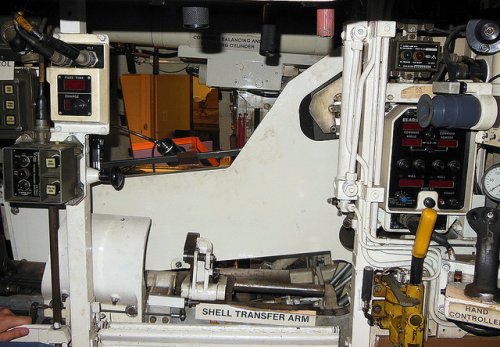 9539042762_e4e5250ee3_z.jpg228.4 KB · Views: 273
9539042762_e4e5250ee3_z.jpg228.4 KB · Views: 273 -
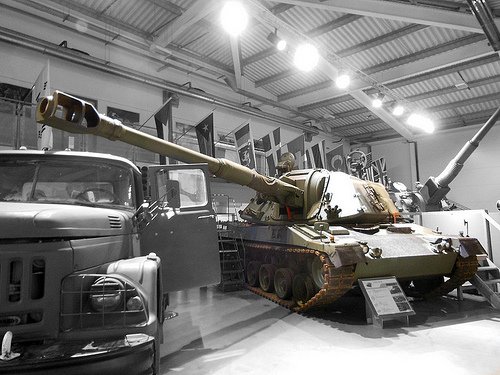 9539042108_9423ea0e7f.jpg107.2 KB · Views: 260
9539042108_9423ea0e7f.jpg107.2 KB · Views: 260 -
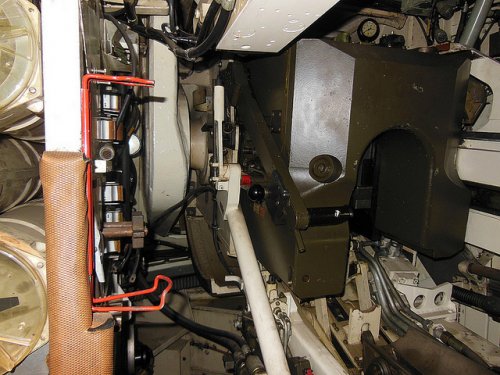 9539041658_c83688d3fe_z.jpg242.8 KB · Views: 262
9539041658_c83688d3fe_z.jpg242.8 KB · Views: 262 -
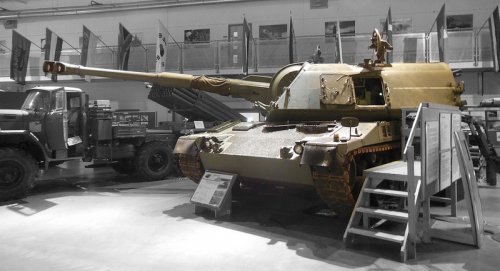 9536254087_9c57c5c97f_b.jpg172 KB · Views: 333
9536254087_9c57c5c97f_b.jpg172 KB · Views: 333 -
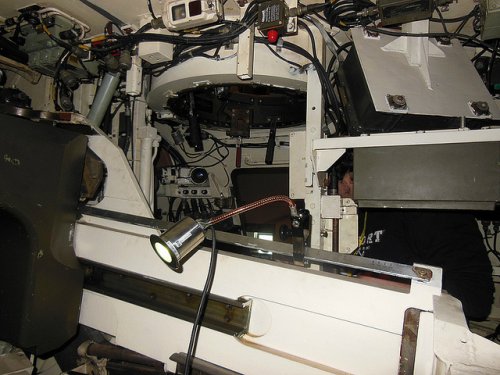 9536253793_9d124fa6ce_z.jpg206.4 KB · Views: 326
9536253793_9d124fa6ce_z.jpg206.4 KB · Views: 326 -
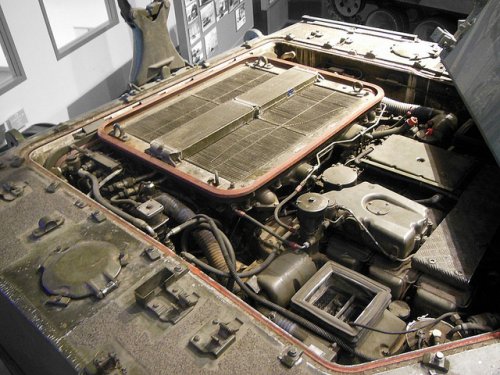 9536253533_d9e554d960_z.jpg251.2 KB · Views: 315
9536253533_d9e554d960_z.jpg251.2 KB · Views: 315 -
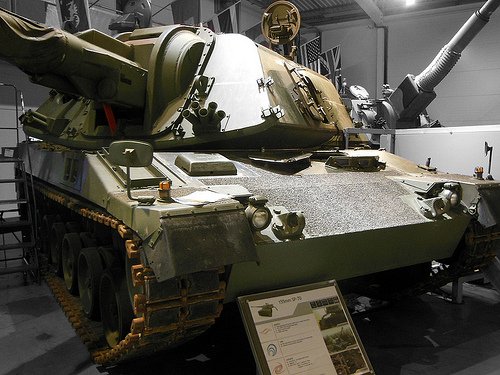 9536253089_db91f8207f.jpg132.2 KB · Views: 403
9536253089_db91f8207f.jpg132.2 KB · Views: 403 -
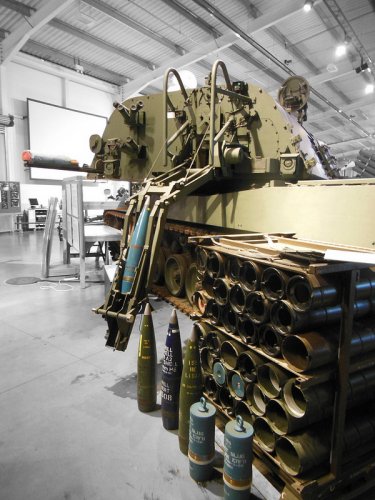 9539042386_387a425070_c.jpg274.6 KB · Views: 286
9539042386_387a425070_c.jpg274.6 KB · Views: 286
- Joined
- 21 May 2006
- Messages
- 3,002
- Reaction score
- 2,278
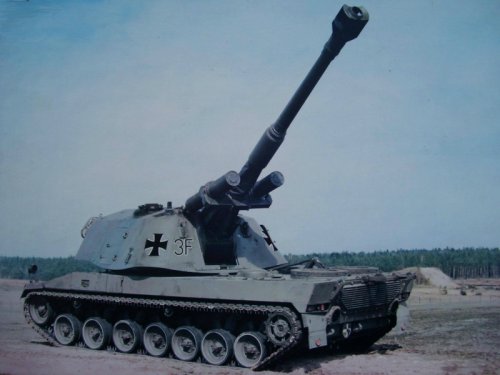
SP-70 / PanzerHaubitze-155-1
SP-70 / PanzerHaubitze-155-1 One of the final prototypes. History of development: In 1963, NATO countries came to the conclusion that they needed to modernise their artillery systems and standardise the caliber and ammunition of the howitzers. In 1968, Germany, the US and the UK began to develop ...
Drowning Dugong
ACCESS: Restricted
- Joined
- 26 November 2020
- Messages
- 1
- Reaction score
- 5
Between 1976 & 1979 I was involved in the control systems and protocols for the SP80. Whichever prime mover and ordnance was ultimately chosen the principle was a semi-autonomous artillery platform.
the FOO with GPS and Laser Rangefinder would deploy to overlook the target area.
The SP80 would be driven by the driver to a location as indicated by an onboard GPS system (early Satnav).
The control system would know to 10 digits thd location of both the FOO and the gun it guns which need not be co-located. The FOO pointed the Rangefinder at the target and made a designation, troops in open, dug in armoured vehs etc. From the point of the FOO it’s easy to calculate the precise location of the target ( Direction, distance, elevation etc). this data was squirted back to the guns and the fire control center.
The gun, preloaded with modified FACE data and Met, works out its own targeting data including ToF as well as using the FOOs tgt designation it selected appropriate ammo and calculating ToF and Reqd ToT lays onto the tgt and fires.
The yanks caused one hell of a ruckus going on about the morality of a gun firing on its own and machines killing people etc. So it was proposed to put a gun commander in the hatch, when the gun had done the work and was ready to fire a red light would go green and the monkey in the turret would press a button allowing the gun to fire.
The details and programming was still in motion when due to difficulties with partner nations made worse by constant negative pressure injected by the Yanks the project was pulled. I went in to command & control communication protocols.
This was all heady stuff in the days when the main battlefield radios were the C45 etc pre clansman pre ptarmigan though it was in the air. People don’t fully understand how much this country has been held back by American influence and greed. Nowadays of course UAVs fly around selecting and engaging targets often without the monkey pressing the button but they’re all American systems.
the FOO with GPS and Laser Rangefinder would deploy to overlook the target area.
The SP80 would be driven by the driver to a location as indicated by an onboard GPS system (early Satnav).
The control system would know to 10 digits thd location of both the FOO and the gun it guns which need not be co-located. The FOO pointed the Rangefinder at the target and made a designation, troops in open, dug in armoured vehs etc. From the point of the FOO it’s easy to calculate the precise location of the target ( Direction, distance, elevation etc). this data was squirted back to the guns and the fire control center.
The gun, preloaded with modified FACE data and Met, works out its own targeting data including ToF as well as using the FOOs tgt designation it selected appropriate ammo and calculating ToF and Reqd ToT lays onto the tgt and fires.
The yanks caused one hell of a ruckus going on about the morality of a gun firing on its own and machines killing people etc. So it was proposed to put a gun commander in the hatch, when the gun had done the work and was ready to fire a red light would go green and the monkey in the turret would press a button allowing the gun to fire.
The details and programming was still in motion when due to difficulties with partner nations made worse by constant negative pressure injected by the Yanks the project was pulled. I went in to command & control communication protocols.
This was all heady stuff in the days when the main battlefield radios were the C45 etc pre clansman pre ptarmigan though it was in the air. People don’t fully understand how much this country has been held back by American influence and greed. Nowadays of course UAVs fly around selecting and engaging targets often without the monkey pressing the button but they’re all American systems.
- Joined
- 21 May 2006
- Messages
- 3,002
- Reaction score
- 2,278
"In 1968, Germany, the US and the UK began to develop the FH-70, a new towed howitzer to replace the ones dating back to WW2 that also lacked common ammunition. Italy joined the project and the United States broke away 2 years later."View attachment 614910SP-70 / PanzerHaubitze-155-1
SP-70 / PanzerHaubitze-155-1 One of the final prototypes. History of development: In 1963, NATO countries came to the conclusion that they needed to modernise their artillery systems and standardise the caliber and ammunition of the howitzers. In 1968, Germany, the US and the UK began to develop ...forum.warthunder.com
That's interesting, I never realised the United States was part of the original FH-70 program.
Regards
Pioneer
isayyo2
Lurker alert
- Joined
- 24 November 2011
- Messages
- 1,131
- Reaction score
- 2,330
Probably a program that led up the M198, perhaps the FH-70 was too heavy for the Chinook and the Europeans had no interest in aerial envelopment?"In 1968, Germany, the US and the UK began to develop the FH-70, a new towed howitzer to replace the ones dating back to WW2 that also lacked common ammunition. Italy joined the project and the United States broke away 2 years later."View attachment 614910SP-70 / PanzerHaubitze-155-1
SP-70 / PanzerHaubitze-155-1 One of the final prototypes. History of development: In 1963, NATO countries came to the conclusion that they needed to modernise their artillery systems and standardise the caliber and ammunition of the howitzers. In 1968, Germany, the US and the UK began to develop ...forum.warthunder.com
That's interesting, I never realised the United States was part of the original FH-70 program.
Regards
Pioneer
Stephen1974
ACCESS: Restricted
- Joined
- 28 December 2021
- Messages
- 1
- Reaction score
- 0
Between 1976 & 1979 I was involved in the control systems and protocols for the SP80. Whichever prime mover and ordnance was ultimately chosen the
The yanks caused one hell of a ruckus going on about the morality of a gun firing on its own and machines killing people etc. So it was proposed to put a gun commander in the hatch, when the gun had done the work and was ready to fire a red light would go green and the monkey in the turret would press a button allowing the gun to fire.
Don't suppose you ever ran in to a Sgt Hicks from the Royal Artillery during your work on this? He was the monkey in the turret.
monochromelody
ACCESS: Confidential
- Joined
- 3 November 2015
- Messages
- 72
- Reaction score
- 204
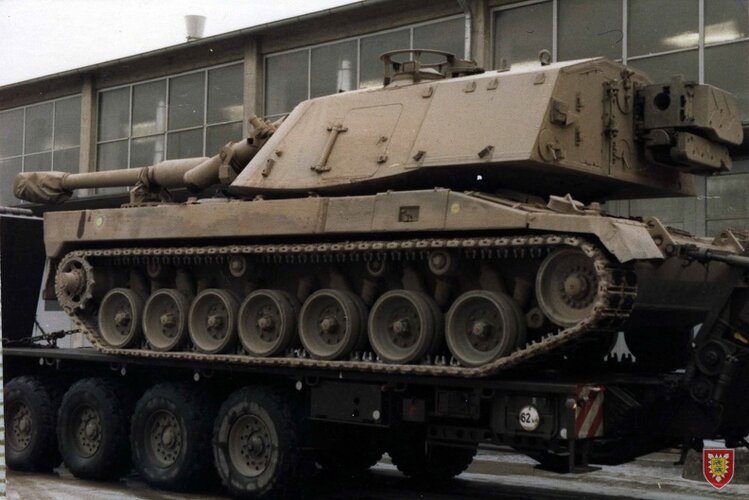
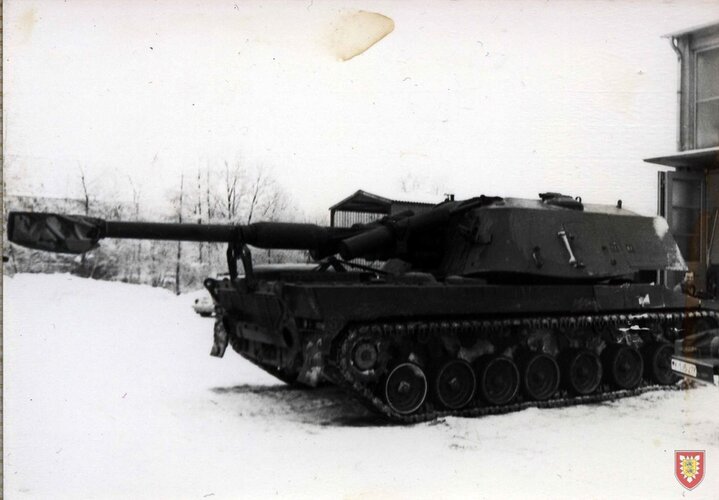
Panzerbrigade 18 / Panzerartilleriebataillon 185 / 1976-80 - PzArtBtl 185 - Welsch (Kdr)
Panzerbrigade 18 / Panzerartilleriebataillon 185 / 1976-80 - PzArtBtl 185 - Welsch (Kdr)
Elenta Lin
ACCESS: Restricted
- Joined
- 1 June 2022
- Messages
- 10
- Reaction score
- 17
As far as I know, the biggest problem in the SP70 project is its rate of fire requirements. The development team had long been unable to meet the requirement of firing three rounds within 10 seconds - something the Bundeswehr insisted on. The development team first tried increasing hydraulic power to speed up the ejection (which proved unsuccessful), and then developed a pneumatic cylinder-based ejection arm that looked like a spear thrower. This solved the problem of rate of fire, but the Bundeswehr decided to cancel the development of the SP70 at this time and switch to the PZH2000, and the project was terminated.
The picture below shows what the prototype ejector arm looks like.
The picture below shows what the prototype ejector arm looks like.
Attachments
Slakrrrrrr
I really should change my personal text
- Joined
- 3 October 2012
- Messages
- 26
- Reaction score
- 103
Some drawings and patents.
Attachments
-
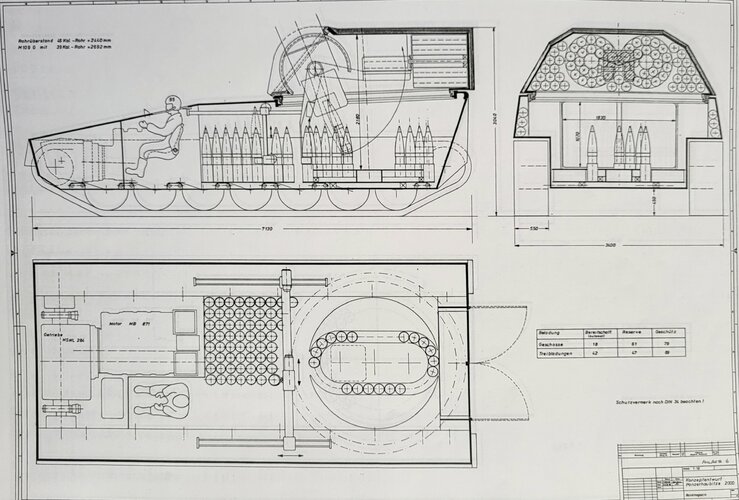 PzH 2000 Wegmann Anlage 6.jpg1 MB · Views: 117
PzH 2000 Wegmann Anlage 6.jpg1 MB · Views: 117 -
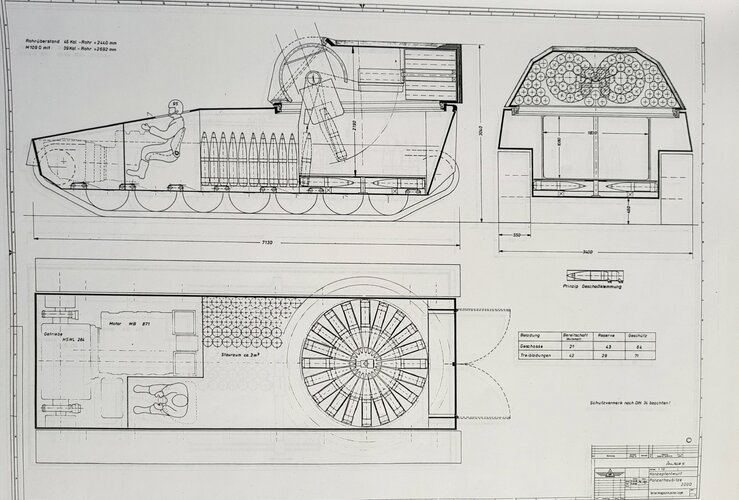 PzH 2000 Wegmann Anlage 5.jpg1.2 MB · Views: 109
PzH 2000 Wegmann Anlage 5.jpg1.2 MB · Views: 109 -
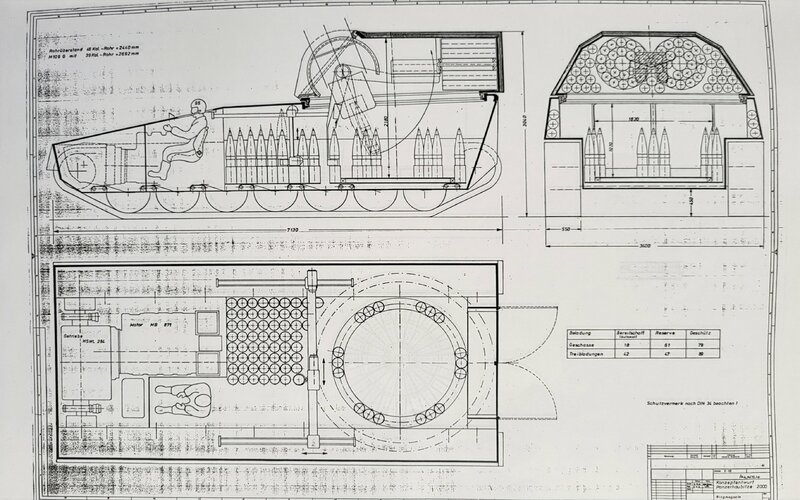 PzH 2000 Wegmann Anlage 4.jpg1.2 MB · Views: 102
PzH 2000 Wegmann Anlage 4.jpg1.2 MB · Views: 102 -
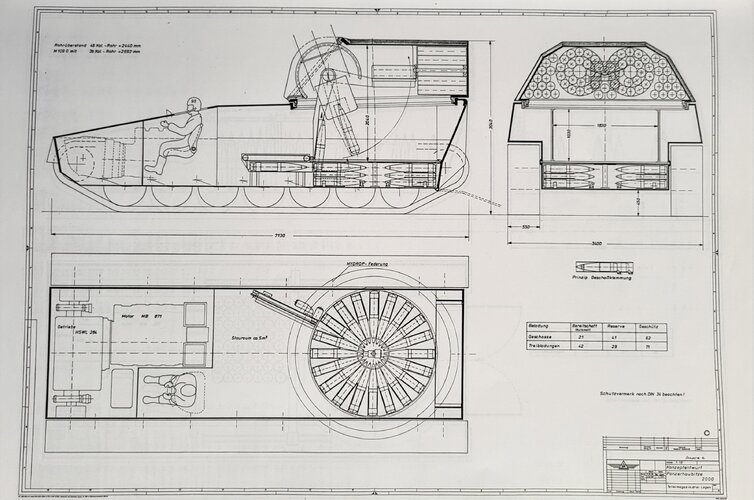 PzH 2000 Wegmann Anlage 2.jpg4.1 MB · Views: 125
PzH 2000 Wegmann Anlage 2.jpg4.1 MB · Views: 125 -
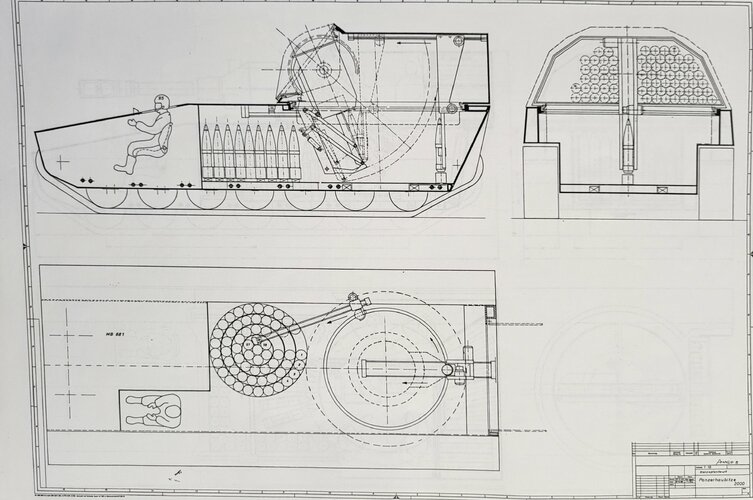 PzH 2000 Wegmann Anlage 8.jpg1,021.9 KB · Views: 112
PzH 2000 Wegmann Anlage 8.jpg1,021.9 KB · Views: 112 -
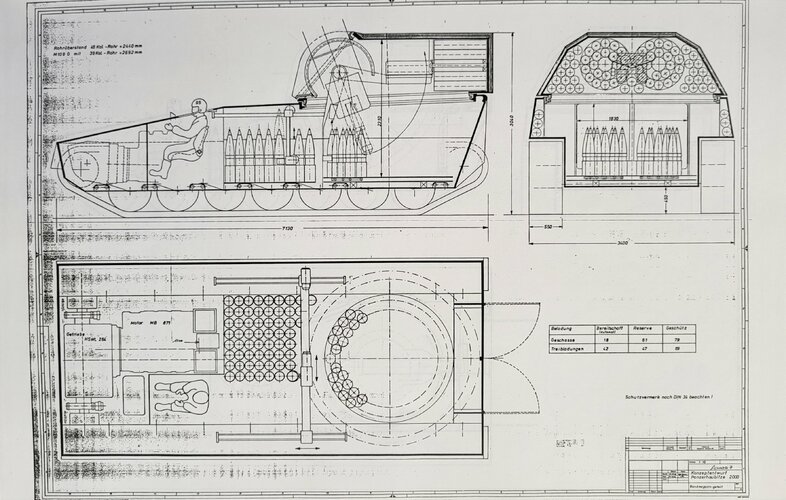 PzH 2000 Wegmann Anlage 7.jpg1.1 MB · Views: 109
PzH 2000 Wegmann Anlage 7.jpg1.1 MB · Views: 109 -
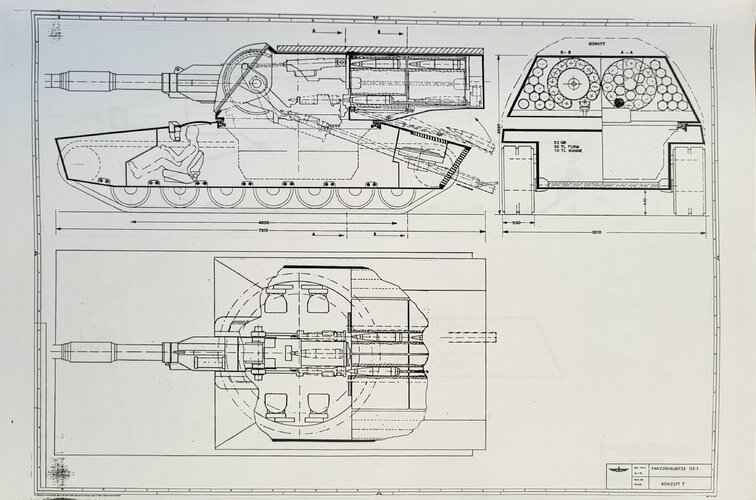 PzH 155-1 Wegmann Konzept 7.jpg961.3 KB · Views: 111
PzH 155-1 Wegmann Konzept 7.jpg961.3 KB · Views: 111 -
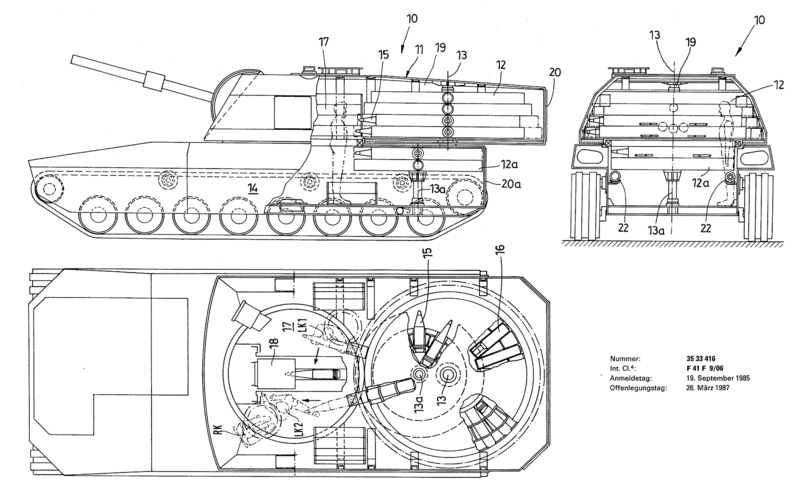 Rheinmetall Tank 1985.png401 KB · Views: 111
Rheinmetall Tank 1985.png401 KB · Views: 111 -
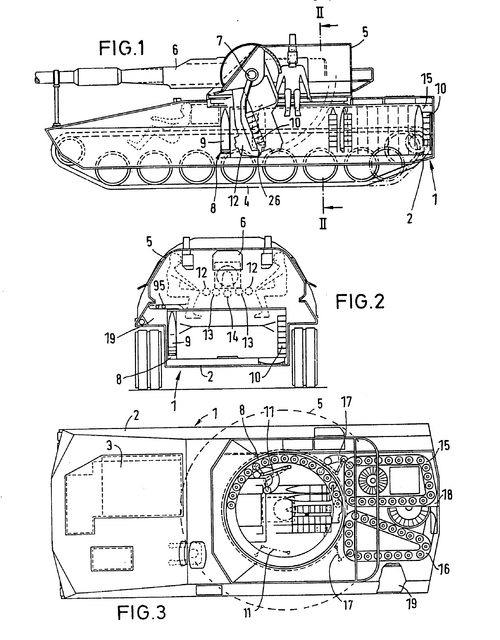 Rheinmetall SPG 1987.png290.4 KB · Views: 116
Rheinmetall SPG 1987.png290.4 KB · Views: 116 -
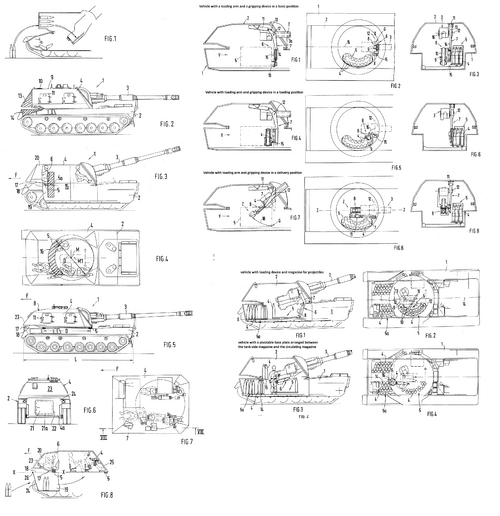 Porsche SPG Designs 1986.png861.1 KB · Views: 137
Porsche SPG Designs 1986.png861.1 KB · Views: 137 -
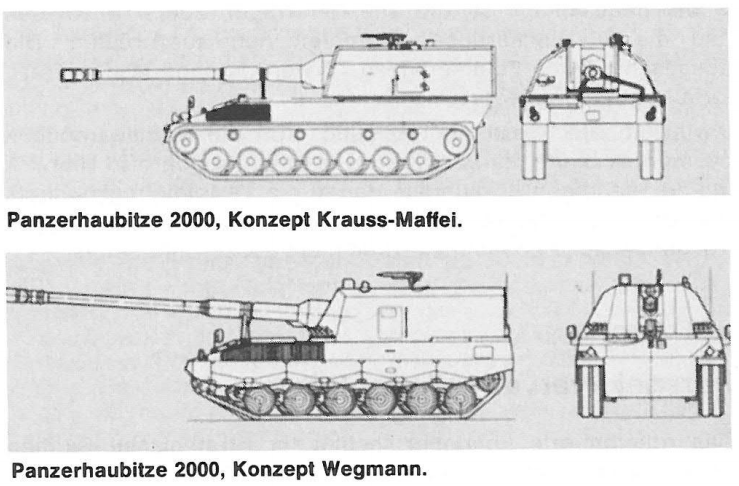 PzH 2000 Concepts.png294.2 KB · Views: 159
PzH 2000 Concepts.png294.2 KB · Views: 159
Similar threads
-
-
-
APE Amphibious Engineer Reconnaissance Vehicle
- Started by Abraham Gubler
- Replies: 16
-
The 1968 French civil war and it's aftermath
- Started by Michel Van
- Replies: 28
-
Germans Cold War Spyplanes - D-450 Egrett-1 D-500 G-520 Strato G-850 Strato C2
- Started by Michel Van
- Replies: 25

